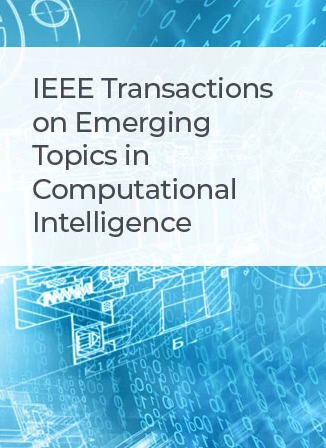Efficient Multi-View Clustering via Essential Tensorized Bipartite Graph Learning
IF 5.3
3区 计算机科学
Q1 COMPUTER SCIENCE, ARTIFICIAL INTELLIGENCE
IEEE Transactions on Emerging Topics in Computational Intelligence
Pub Date : 2024-12-09
DOI:10.1109/TETCI.2024.3502459
引用次数: 0
Abstract
Multi-view spectral clustering has garnered significant attention for its capacity to integrate intrinsic feature information from multiple perspectives, resulting in improved performance. However, the oversight of inter-view correlations has led to suboptimal outcomes. Furthermore, the conventional method of constructing an基于基本张化二部图学习的高效多视图聚类
多视点光谱聚类因其能够从多个角度整合固有特征信息,从而提高聚类性能而备受关注。然而,对访谈观点相关性的忽视导致了次优结果。此外,在多视图聚类中构造$N \ × N$图的传统方法在处理大规模场景时增加了大量的时间负担。为了解决这些问题,本文提出了一种基于基本张化二部图学习(ETBGL)的高效多视图聚类方法。具体而言,ETBGL利用低秩张量Schatten $p$范数捕获视图间相似性,有效捕获嵌入在多个视图中的高阶相关信息。同时,通过结合二部图学习,ETBGL有效地降低了与张量操作相关的计算需求和空间复杂性。此外,我们引入张量的$\ well _{2,1}$范数作为对误差项的稀疏惩罚,目的是滤除噪声并保留共享信息,从而增强聚类的鲁棒性。我们用一种时间经济且收敛性好的高效算法来求解目标。对不同数据集的综合评估证明了我们提出的模型的卓越性能。
本文章由计算机程序翻译,如有差异,请以英文原文为准。
求助全文
约1分钟内获得全文
求助全文
来源期刊

IEEE Transactions on Emerging Topics in Computational Intelligence
Mathematics-Control and Optimization
CiteScore
10.30
自引率
7.50%
发文量
147
期刊介绍:
The IEEE Transactions on Emerging Topics in Computational Intelligence (TETCI) publishes original articles on emerging aspects of computational intelligence, including theory, applications, and surveys.
TETCI is an electronics only publication. TETCI publishes six issues per year.
Authors are encouraged to submit manuscripts in any emerging topic in computational intelligence, especially nature-inspired computing topics not covered by other IEEE Computational Intelligence Society journals. A few such illustrative examples are glial cell networks, computational neuroscience, Brain Computer Interface, ambient intelligence, non-fuzzy computing with words, artificial life, cultural learning, artificial endocrine networks, social reasoning, artificial hormone networks, computational intelligence for the IoT and Smart-X technologies.
 求助内容:
求助内容: 应助结果提醒方式:
应助结果提醒方式:


